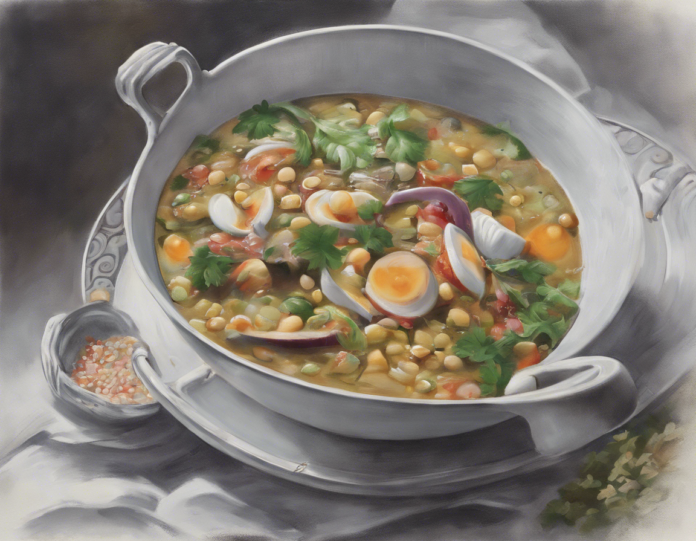As the world continues to grapple with the challenges posed by climate change and diminishing natural resources, the need for sustainable and eco-friendly agricultural practices has never been more urgent. In this context, Udal farming has emerged as a promising solution that not only addresses these pressing concerns but also offers a host of other benefits. In this comprehensive guide, we will delve into the concept of Udal farming, its advantages, practices, and its potential to revolutionize the way we approach agriculture.
What is Udal Farming?
Udal farming, also known as sustainable agriculture or agroecology, is an integrated farming system that focuses on enhancing ecosystem health, promoting biodiversity, and minimizing the use of synthetic inputs such as chemical fertilizers and pesticides. The concept draws inspiration from traditional farming practices that have sustained communities for generations while integrating modern scientific knowledge to optimize agricultural productivity.
Advantages of Udal Farming
1. Environmental Sustainability:
- Biodiversity Conservation: Udal farming promotes the preservation of diverse plant and animal species, which is crucial for ecosystem balance.
- Soil Health: By avoiding the use of synthetic chemicals, Udal farming helps maintain soil fertility and structure, preventing erosion and degradation.
- Water Conservation: Practices such as crop rotation and mulching help conserve water and reduce the strain on freshwater resources.
2. Economic Viability:
- Cost Efficiency: Udal farming reduces input costs by using organic fertilizers, crop rotation, and biological pest control methods, thereby improving farm profitability.
- Market Demand: With an increasing awareness of the benefits of organic produce, Udal farmers can tap into lucrative niche markets and command premium prices for their products.
3. Community Resilience:
- Food Security: By diversifying crops and promoting self-sufficiency, Udal farming enhances food security at the community level, reducing dependency on external sources.
- Social Cohesion: Udal farming fosters community collaboration, knowledge sharing, and cultural practices, strengthening social bonds and resilience.
Udal Farming Practices
1. Crop Rotation:
- Rotating different crops on the same piece of land helps prevent soil depletion, pest build-up, and diseases, leading to improved yields and soil health.
2. Companion Planting:
- Planting complementary crops together can enhance nutrient uptake, repel pests, and promote overall plant health, reducing the need for chemical interventions.
3. Natural Pest Control:
- Encouraging beneficial insects, birds, and predators in the ecosystem can help control pest populations naturally, minimizing the use of pesticides.
4. Organic Fertilization:
- Utilizing organic materials such as compost, manure, and cover crops enriches the soil with essential nutrients, fostering healthy plant growth and microbial diversity.
Potential Impact of Udal Farming
The adoption of Udal farming practices has the potential to bring about a paradigm shift in the agricultural sector, leading to:
- Enhanced Resilience: Udal farming systems are more resilient to climatic fluctuations and pest outbreaks, reducing risks for farmers.
- Improved Health: By avoiding exposure to harmful chemicals, consumers can benefit from nutritious and chemical-free produce.
- Sustainable Development: Udal farming aligns with the principles of sustainable development, balancing economic prosperity, social well-being, and environmental stewardship.
Frequently Asked Questions (FAQs)
1. What is the difference between Udal farming and conventional farming?
- Udal farming relies on natural processes, biodiversity, and traditional knowledge to sustain agricultural productivity, while conventional farming often uses synthetic inputs and monocropping techniques.
2. Is Udal farming suitable for all types of crops?
- Yes, Udal farming principles can be applied to a wide range of crops, including fruits, vegetables, grains, and medicinal plants.
3. Can small-scale farmers practice Udal farming?
- Absolutely, Udal farming is scalable and adaptable to small-scale farming operations, promoting sustainability and resilience in local communities.
4. How can I transition from conventional farming to Udal farming?
- Transitioning to Udal farming involves gradual changes in practices, such as reducing chemical inputs, implementing crop rotation, and integrating biodiversity-enhancing techniques.
5. Are there any certification programs for Udal farming?
- While Udal farming does not have a standardized certification system, organic and sustainable agriculture certifications can validate adherence to environmentally friendly practices.
In conclusion, Udal farming represents a holistic approach to agriculture that prioritizes ecological harmony, economic prosperity, and community well-being. By embracing the principles of sustainability and leveraging the wisdom of traditional farming practices, we can create a more resilient and thriving agricultural system for generations to come.

